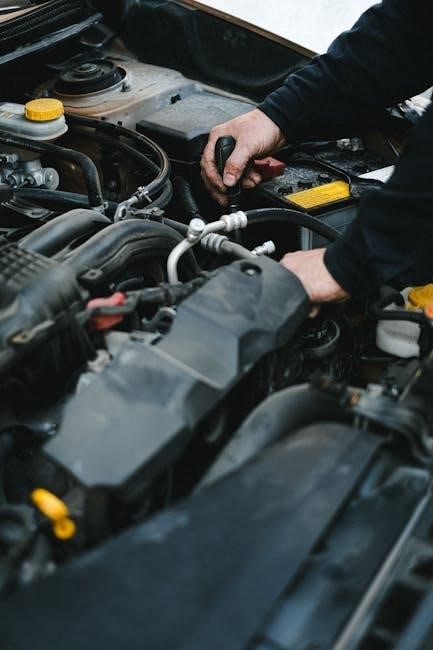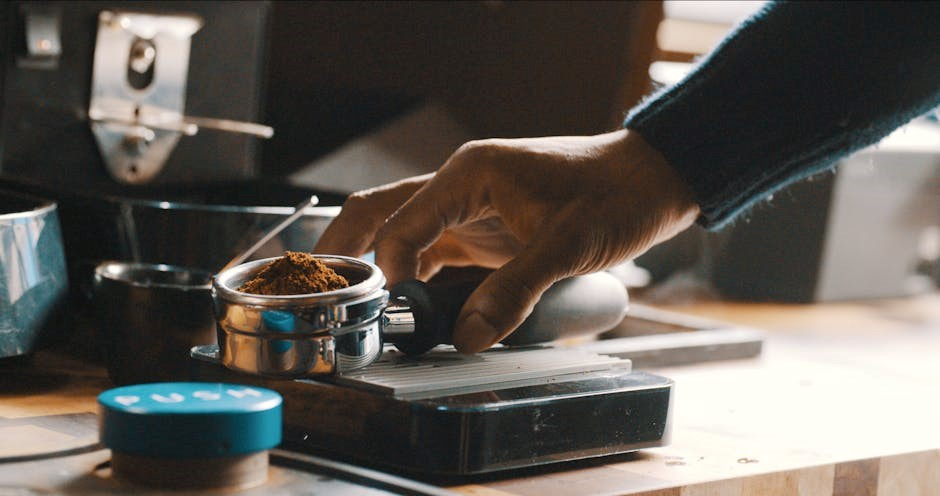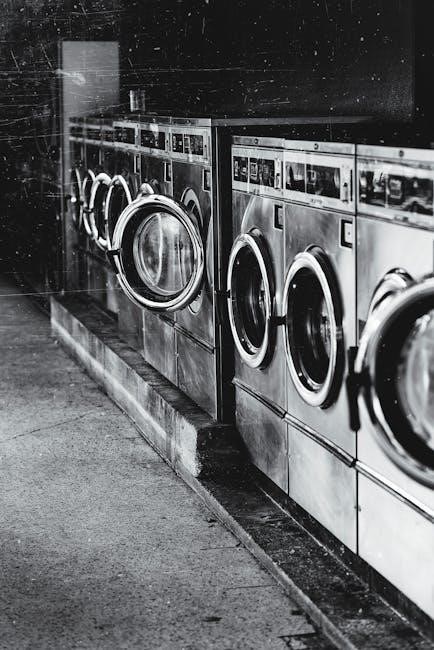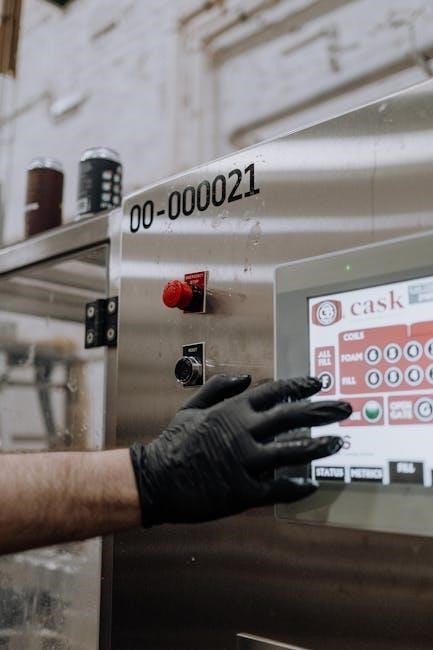Welcome to the Motorola Walkie Talkie Instructions Manual. This comprehensive guide provides detailed setup, usage, and troubleshooting tips for optimal performance. Perfect for both new and experienced users.
1.1 Overview of the Manual
This manual provides a comprehensive guide for Motorola walkie-talkie users, covering essential topics like installation, operation, and maintenance. It includes detailed instructions for setting up channels, adjusting settings, and troubleshooting common issues. Designed for both novice and experienced users, the manual ensures safe and effective use of the device. Key features, safety guidelines, and optimal usage tips are highlighted to enhance your communication experience.
1.2 Importance of Reading the Manual
Reading the Motorola Walkie Talkie manual is crucial for understanding safety guidelines, proper operation, and maximizing device features. It ensures compliance with RF exposure limits and helps users avoid potential hazards. The manual provides troubleshooting tips and maintenance advice, enhancing performance and longevity. Whether you’re a new or experienced user, this guide is essential for safe, effective, and optimal use of your Motorola walkie-talkie.
Safety Precautions and RF Exposure Guidelines
Understanding RF energy exposure is vital for safe usage. Follow guidelines to avoid hazards and ensure compliance with safety standards. Proper handling prevents risks and optimizes performance.
2.1 Understanding RF Energy Exposure
RF energy exposure guidelines are crucial for safe usage of Motorola walkie talkies. These devices emit low levels of radiofrequency energy, regulated by safety standards. Proper handling, such as using approved accessories and maintaining a distance from the body during transmission, minimizes exposure risks. Always follow the provided safety guide to ensure compliance and optimal performance. Understanding these guidelines helps users operate the device responsibly and safely.
2;2 Safety Tips for Using Walkie Talkies
Ensure safe usage by following essential guidelines. Always read the RF Energy Exposure and Product Safety Guide. Use only approved Motorola accessories to maintain compliance. Avoid exposing the device to water or extreme temperatures. Keep the walkie talkie away from children and flammable materials. Handle antennas with care to prevent damage. Follow proper charging procedures and avoid overcharging. By adhering to these tips, you ensure responsible usage and optimal device performance.
Contents of the Manual Package
The manual package includes the Motorola walkie-talkie unit, rechargeable batteries, charger, antenna, belt clip, and a comprehensive user guide for easy setup and operation.
3.1 What’s Included in the Box
The Motorola walkie-talkie package includes the radio unit, rechargeable batteries, a charger, antenna, belt clip, and a detailed user manual. Additional accessories like speaker microphones and earpieces may be available, depending on the model. This comprehensive setup ensures you have everything needed for immediate use and optimal performance.
3.2 Accessories and Optional Equipment
Motorola walkie-talkies offer a range of accessories to enhance functionality. These include speaker microphones, earpieces, and headsets for discreet communication; Additional items like car chargers, desktop chargers, and carry cases provide convenience. Optional equipment such as extended batteries and antenna upgrades can improve performance. These accessories ensure tailored solutions for various user needs, whether for personal, professional, or outdoor use.
Installation and Setup
Install batteries, charge the device, and complete initial setup. Follow manual instructions for proper configuration to ensure optimal performance and functionality of your Motorola walkie-talkie.
4.1 Battery Installation and Charging
Insert the batteries by aligning the positive and negative terminals correctly. Use the provided charging dock or USB cable for charging. Ensure the walkie-talkie is turned off during charging. Allow 12-24 hours for a full charge; Avoid overcharging to prolong battery life. Always use Motorola-approved batteries and chargers for optimal performance and safety. Refer to the manual for specific charging instructions and guidelines.
4.2 Initial Setup and Configuration
Turn on your Motorola walkie-talkie by pressing and holding the power button. Navigate through the menu to set your preferred language, display settings, and backlight preferences. Use the keypad to input your desired channel and sub-code. Set the date and time if required. Save your settings to ensure proper functionality. Refer to the manual for detailed instructions on configuring advanced features and pairing devices for seamless communication.
Basic Operations
Learn to turn your Motorola walkie-talkie on/off, adjust volume levels, and master basic communication techniques for seamless connectivity. Essential steps for everyday use are clearly outlined.
5.1 Turning the Radio On/Off
To turn your Motorola walkie-talkie on, press and hold the power button until the LED indicator lights up. Release the button once the radio is active. To turn it off, press and hold the same button until the LED turns off. Ensure the device is powered off when not in use to conserve battery life. This simple process ensures efficient operation and extends the product’s longevity.
5.2 Adjusting Volume Levels
Adjust the volume on your Motorola walkie-talkie by pressing the volume up (+) or down (-) buttons. The LED will indicate the current volume level. For optimal communication, set the volume to a comfortable level that ensures clear audio without distortion. Proper volume adjustment enhances listening clarity and helps maintain effective communication in various environments. This feature is essential for both personal and professional use, ensuring clear voice transmission and reception.
5.3 Basic Communication Techniques
Mastering basic communication techniques ensures effective use of your Motorola walkie-talkie. Always set the same channel and sub-code on all devices for clear transmission. Speak clearly into the microphone, holding it 2-3 inches from your mouth. Use the push-to-talk (PTT) button to start and end transmissions. Avoid interrupting others and wait for confirmation before responding. These practices minimize interference and ensure seamless communication, enhancing overall user experience and efficiency in various settings.
Advanced Features and Settings
Explore advanced features like channel programming, sub-code settings, and scanning options to enhance communication efficiency and customization, ensuring tailored use for various environments and preferences.
6.1 Channel Selection and Programming
Channel selection and programming allow users to customize their Motorola walkie-talkie experience. Models like the T42, T6200, and T6220 operate on FRS/GMRS frequencies, offering multiple channels for clear communication. Users can manually select channels or program them using the keypad and menu options. This feature ensures compatibility with other devices and enhances communication efficiency in various environments. Proper programming is essential for optimal performance and interference-free connectivity.
6.2 Sub-Code and Privacy Settings
Motorola walkie-talkies feature sub-code settings to enhance privacy and reduce interference. By selecting a unique sub-code, users can filter out unwanted transmissions, ensuring only intended communications are received. This feature is particularly useful in busy environments or when multiple groups are using the same channel. Properly setting sub-codes requires syncing with other users to maintain seamless and private communication, as detailed in the manual.
6.3 Scanning and Monitoring Features
Motorola walkie-talkies offer advanced scanning and monitoring capabilities to efficiently manage communications. The scan feature allows users to automatically search for active channels, ensuring quick connection to ongoing conversations. Monitoring features enable real-time tracking of multiple channels, reducing missed transmissions. These functions enhance productivity and streamline communication, especially in environments with high radio traffic, as detailed in the manual for optimal setup and usage.
Customization and Personalization
Motorola walkie-talkies allow users to customize settings like channels, audio tones, and keypad locks. Personalize your device to suit individual preferences or specific communication needs effectively.
7.1 Setting Up Custom Channels
Setting up custom channels on your Motorola walkie-talkie allows personalized communication preferences. Access the menu, select the channel option, and choose from available frequencies or pre-programmed settings. For models like the T42 or T6200, use the keypad to input specific codes. Ensure all devices in your group are set to the same channel for seamless communication. This feature enhances privacy and efficiency, ideal for both personal and professional use.
7.2 Adjusting Audio and Sound Settings
Adjusting audio and sound settings on your Motorola walkie-talkie ensures clear communication. Use the volume control to optimize sound levels based on your environment. For models like the T42 or T6200, press the volume button until the desired level is reached. You can also enable voice clarity features to enhance call quality. Additionally, adjust the squelch setting to minimize background noise and interference, ensuring crisp and distortion-free audio for effective conversations.
7.3 Using the Keypad Lock Function
The keypad lock function prevents accidental button presses, ensuring your Motorola walkie-talkie settings remain unchanged. To activate, press and hold the lock button until a confirmation tone sounds or the LED flashes. This feature is especially useful during outdoor activities or in busy environments. While locked, only emergency buttons may function, maintaining safety. Refer to your model-specific manual, such as the T42 or T6200, for exact instructions on enabling and disabling this feature.
Troubleshooting Common Issues
Resolve connectivity, audio, and battery issues with step-by-step solutions. Ensure proper channel alignment, volume settings, and battery maintenance for optimal performance. Refer to the manual for detailed fixes.
8.1 Resolving Connectivity Problems
Ensure both devices are on the same channel and privacy code. Check for physical obstructions or distance limits. Verify antenna orientation and battery levels. Reset the device if necessary. Consult the manual for channel realignment and interference reduction tips. If issues persist, perform a hard reset or update firmware. Proper alignment and settings ensure reliable communication.
8.2 Fixing Audio and Sound Issues
Check volume levels and ensure the speaker is not obstructed. Verify the antenna is properly attached for clear reception. Clean the speaker grille to remove debris. If static or distortion occurs, adjust the channel or sub-code. Reset the device to factory settings if issues persist. Ensure firmware is updated for optimal performance. Proper maintenance and settings can resolve most audio-related problems effectively.
8.3 Battery and Charging Troubleshooting
Ensure the battery is properly installed and charged. Check for loose connections or dirt on contacts. Use the original charger to avoid compatibility issues; If the battery drains quickly, adjust settings to reduce power consumption. Avoid overcharging, as it may degrade battery life. If issues persist, reset the device or update firmware. For severe problems, contact Motorola support or replace the battery if necessary.
Maintenance and Care
Regularly clean the device with a soft cloth and avoid harsh chemicals. Store in a dry, cool place to prevent damage. Update firmware for optimal performance.
9.1 Cleaning the Walkie Talkie
Regular cleaning ensures optimal performance and longevity. Use a soft, dry cloth to wipe the exterior and remove dirt or debris. For stubborn stains, lightly dampen the cloth with water, but avoid harsh chemicals or excessive moisture. Clean the antenna and speaker grilles gently to maintain clear communication. Avoid submerging the device in water or exposing it to extreme temperatures. Refer to the manual for specific cleaning solutions or recommendations.
9.2 Storing the Device Properly
Store your Motorola walkie talkie in a cool, dry place to prevent damage. Use the original packaging or a protective case to avoid scratches. Keep the device away from extreme temperatures, moisture, or direct sunlight. Ensure the battery is fully charged or removed before storage to prevent degradation. Regularly inspect the device for dust or debris and clean it gently before storing. Proper storage extends the lifespan and maintains optimal performance.
9.3 Updating Firmware and Software
Regularly update your Motorola walkie talkie’s firmware and software to ensure optimal performance and access to new features. Visit Motorola’s official website to download the latest updates. Use a compatible USB cable to connect the device to your computer and follow the on-screen instructions. Always back up your settings before updating. Keep your radio up-to-date to maintain functionality, security, and compatibility with other devices. Updates may improve audio quality, battery life, and overall user experience.
Warranty and Support Information
Understand your Motorola walkie talkie’s warranty terms and explore support options. Contact Motorola Solutions for assistance, or locate authorized service centers for repairs and maintenance.
10.1 Understanding the Warranty Terms
Motorola walkie talkies come with a limited warranty covering manufacturing defects for a specified period. The warranty typically includes repair or replacement of defective parts. Review the terms to understand coverage duration, conditions, and exclusions. Contact Motorola Support for warranty-related inquiries or to locate authorized service centers for assistance. Proper registration and adherence to usage guidelines may be required to maintain warranty validity.
10.2 Contacting Motorola Support
For assistance with your Motorola walkie talkie, contact Motorola Support through their official website, phone, or email. Visit the Motorola Solutions website to find regional contact details and support options. Live chat and online forums are also available for quick inquiries. Ensure you have your product model and serial number ready for efficient support. Additionally, authorized service centers can be located through the website for in-person assistance.
10.3 Finding Authorized Service Centers
To locate an authorized Motorola service center, visit the official Motorola Solutions website and use the service center locator tool. Enter your location or product details to find nearby centers. Ensure your device is serviced by certified professionals for genuine parts and warranty compliance. Contact Motorola Support for assistance in finding the nearest authorized center.
Frequently Asked Questions (FAQs)
Explore common questions about Motorola Walkie Talkie usage, troubleshooting, and maintenance. Find answers to issues like connectivity, audio problems, and battery life optimization.
11.1 Common Questions About Usage
Users often ask about range, licensing, and battery life. Motorola Walkie Talkies typically cover up to 35 miles under ideal conditions. FRS models don’t require a license, while GMRS models do. For optimal performance, ensure proper antenna orientation and avoid obstacles. Charging times vary by model, but most take 8-12 hours. Programming channels and sub-codes can enhance privacy. Refer to your manual for specific model details and troubleshooting tips.
11.2 Troubleshooting FAQs
Common issues include poor connectivity, static, or no sound. Check if both radios are on the same channel and sub-code. Ensure batteries are fully charged and not damaged. Move to a less obstructed area to improve range. Reset the device by turning it off and on. Clean the antenna and avoid water exposure. For persistent issues, refer to the manual or contact Motorola support for assistance.
11.3 General Maintenance FAQs
Regularly clean the walkie talkie with a soft cloth to prevent dust buildup. Store it in a dry, cool place to avoid moisture damage. Update firmware periodically for improved performance. Check battery health and replace if necessary. Avoid extreme temperatures and physical stress. For long-term storage, remove batteries to prevent leakage. Refer to the manual for detailed care instructions to ensure longevity and optimal functionality of your Motorola walkie talkie.
Mastering your Motorola walkie talkie involves regular updates, proper storage, and safe handling. Follow the manual’s guidelines for optimal performance and longevity of your device.
12.1 Summary of Key Points
This manual provides a comprehensive guide for Motorola walkie talkie users, covering essential topics like safety, installation, basic operations, and advanced features. It emphasizes proper setup, usage, and maintenance to ensure optimal performance. By following the instructions and tips outlined, users can maximize their device’s functionality and longevity, ensuring reliable communication in various settings.
12.2 Best Practices for Optimal Use
For optimal performance, always read the manual thoroughly and follow safety guidelines. Regularly clean the device, store it properly, and use original Motorola accessories. Charge batteries correctly and avoid extreme temperatures. Familiarize yourself with advanced features like channel programming and privacy settings. Practice efficient communication techniques and ensure all users are on the same settings. By adhering to these practices, you can extend the lifespan and reliability of your Motorola walkie talkie.
Additional Resources
Explore online tutorials, downloadable guides, and community forums for further assistance. Visit Motorola’s official website for the latest manuals and troubleshooting tips to enhance your experience.
13.1 Online Tutorials and Guides
Access a wealth of online resources, including video tutorials and step-by-step guides, to master your Motorola Walkie Talkie. Websites like YouTube offer detailed setup and usage videos for models like the T600 H2O. Additionally, official Motorola forums and third-party sites provide troubleshooting tips and advanced feature explanations. These resources are ideal for both new users and experienced professionals seeking to optimize their device’s performance and explore its full potential.
13.2 Downloading the Latest Manual
Download the latest Motorola Walkie Talkie manual from trusted sources like ManualsLib or Motorola’s official website. These manuals are available in PDF format, ensuring easy access to detailed instructions, troubleshooting guides, and feature updates. Simply search for your specific model, such as the T600 H2O or T42, and follow the download prompts. This ensures you have the most current information to optimize your device’s performance and resolve any issues efficiently.
13.3 Community Forums and Support Groups
Join Motorola walkie talkie community forums and support groups to connect with experts and users. Platforms like ManualsLib and Motorola Solutions offer discussions, troubleshooting tips, and advice. These forums are ideal for resolving issues, sharing experiences, and learning optimal usage techniques. Active communities provide updated information on software, accessories, and best practices, ensuring you maximize your device’s potential and stay informed about the latest features and updates.














